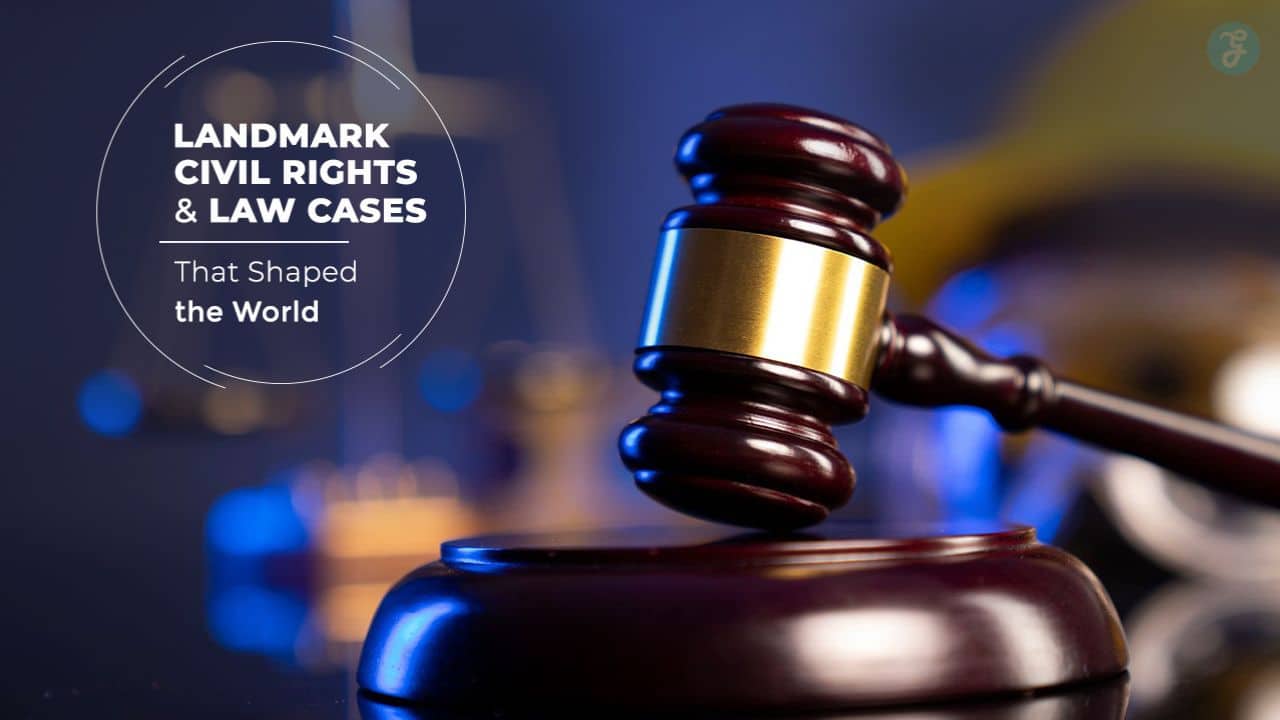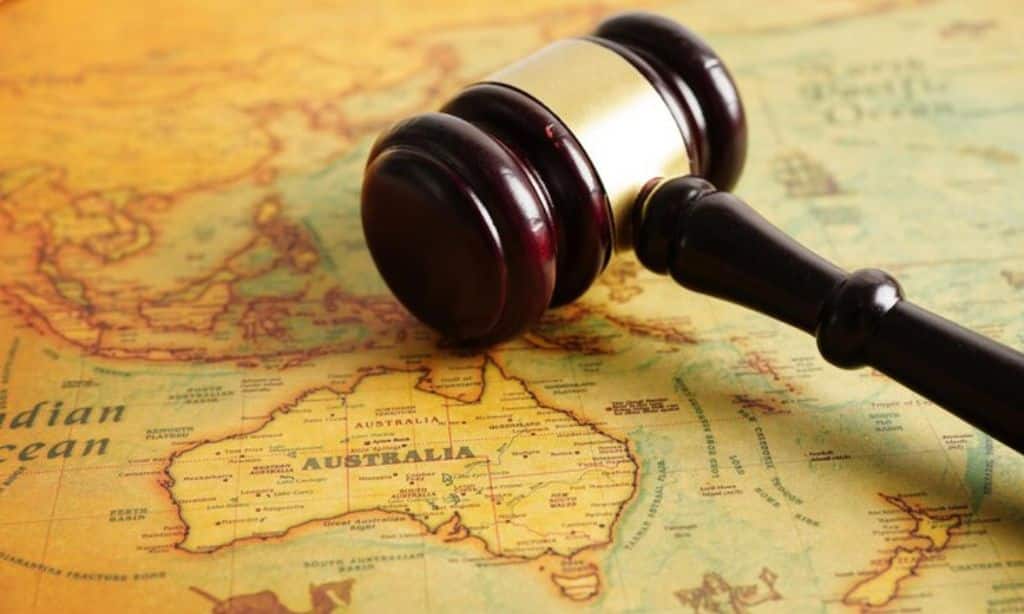Civil rights and law are often the bedrock of societal progress. Across history, certain cases have not only transformed legal landscapes but also reshaped social norms, ensuring justice and equality for millions.
These landmark civil rights cases serve as powerful reminders of how judicial decisions can influence the course of history.
In this article, we explore ten such pivotal cases, their contexts, and the far-reaching impacts they have had on the world.
Why Landmark Legal Cases Matter?
Landmark legal cases are more than courtroom battles; they are milestones in the evolution of human rights and social justice. These decisions challenge established norms, confront injustices, and pave the way for future reforms.
Whether addressing racial segregation, gender equality, or international law, these rulings have a profound impact on societies globally.
The cases discussed here highlight the courage of individuals who stood against oppression, the complexities of legal frameworks, and the enduring significance of judicial precedents. They continue to inspire movements for justice and equality across borders.
10 Landmark Civil Rights Cases That Shaped the World
Let’s take a look!
1. Brown v. Board of Education (1954, USA)
One of the most celebrated landmark civil rights cases, Brown v. Board of Education declared racial segregation in public schools unconstitutional. This U.S. Supreme Court ruling overturned the “separate but equal” doctrine established in Plessy v. Ferguson (1896).
- Context: African American students were forced to attend segregated schools under inferior conditions, perpetuating systemic inequality.
- Impact: The decision catalyzed the Civil Rights Movement, inspiring further efforts toward racial equality in the United States. It demonstrated the judiciary’s role in dismantling institutionalized racism and reinforced the principle that “separate is not equal.”
Key Details Table:
| Aspect | Details |
| Court | U.S. Supreme Court |
| Decision Date | May 17, 1954 |
| Key Outcome | Ended “separate but equal” doctrine |
| Legacy | Sparked widespread desegregation efforts |
| Related Cases | Plessy v. Ferguson |
Actionable Insights:
- Communities can further the legacy of this ruling by advocating for equal funding and resources in education systems.
- Teachers and administrators should emphasize diversity and inclusion in school curriculums.
2. Roe v. Wade (1973, USA)
This landmark decision recognized a woman’s constitutional right to privacy, legalizing abortion nationwide in the United States. The case underscored the intersection of law and individual autonomy.
- Context: The case was brought by “Jane Roe,” challenging Texas laws that banned abortion except to save a woman’s life. It highlighted the struggles faced by women seeking control over their reproductive rights.
- Impact: The ruling emphasized reproductive rights and sparked debates worldwide, influencing legislation in other countries. Despite its controversial nature, it remains central to discussions on healthcare and gender equality.
Key Details Table:
| Aspect | Details |
| Court | U.S. Supreme Court |
| Decision Date | January 22, 1973 |
| Key Outcome | Legalized abortion under certain conditions |
| Legacy | Central to debates on reproductive rights |
Actionable Insights:
- Advocacy groups can work toward accessible healthcare services for marginalized communities.
- Policymakers should focus on creating balanced frameworks that protect individual rights while addressing ethical concerns.
3. Marbury v. Madison (1803, USA)
Often regarded as the foundation of judicial review in the United States, this case established the judiciary’s power to invalidate unconstitutional laws. It became a cornerstone of democratic governance.
- Context: The case arose from a dispute over judicial appointments made by President John Adams. It presented an opportunity to define the role of the judiciary.
- Impact: Marbury v. Madison reinforced the judiciary as a co-equal branch of government, setting a global precedent for constitutional law and judicial independence. This decision has since influenced countless legal systems worldwide.
Key Details Table:
| Aspect | Details |
| Court | U.S. Supreme Court |
| Decision Date | February 24, 1803 |
| Key Outcome | Established judicial review |
| Legacy | Strengthened checks and balances |
Actionable Insights:
- Students and professionals should study this case to understand the balance of power in governance.
- Civic education programs can include case studies to foster awareness of constitutional rights.
4. Miranda v. Arizona (1966, USA)
This case introduced the “Miranda rights,” ensuring individuals are informed of their legal rights upon arrest. It remains one of the most recognizable legal safeguards in criminal justice.
- Context: Ernesto Miranda’s confession during police interrogation was obtained without being informed of his rights, raising concerns about due process.
- Impact: Strengthened protections against self-incrimination and shaped police procedures worldwide. The ruling set standards for ethical law enforcement practices, becoming a model for other countries.
Key Details Table:
| Aspect | Details |
| Court | U.S. Supreme Court |
| Decision Date | June 13, 1966 |
| Key Outcome | Established Miranda rights |
| Legacy | Defined procedural safeguards in arrests |
| Related Practices | Right to legal counsel |
Actionable Insights:
- Law enforcement agencies should invest in training programs that emphasize ethical interrogation practices.
- Citizens should familiarize themselves with their rights to ensure fair treatment during legal processes.
5. Brown v. Tasmania (1997, Australia)
This pivotal case in Australian law recognized the fundamental right to protest, strengthening freedoms of expression and assembly. It highlighted the balance between individual rights and environmental activism.
- Context: Protestors opposed the construction of a dam in the Tasmanian wilderness, challenging government suppression. The case became a symbol of environmental justice.
- Impact: The decision underscored individual rights against governmental overreach, setting a precedent for upholding democratic freedoms.
Key Details Table:
| Aspect | Details |
| Court | High Court of Australia |
| Decision Date | April 1997 |
| Key Outcome | Affirmed the right to peaceful protest |
| Legacy | Strengthened civil liberties |
| Relevant Movements | Climate justice campaigns |
Actionable Insights:
- Activist groups can reference this case to safeguard protest rights in ongoing environmental campaigns.
- Legislators should ensure that laws governing protests are balanced and uphold civil liberties.
6. Dred Scott v. Sandford (1857, USA)
This infamous case denied African Americans citizenship, stating that enslaved individuals and their descendants could not be U.S. citizens. It remains a stark example of judicial failure to uphold human rights.
- Context: Dred Scott, an enslaved man, sued for his freedom after living in free states with his owner. The court ruled against him, reinforcing the institution of slavery and intensifying pre-Civil War tensions.
- Impact: The ruling exposed systemic racism and highlighted the urgent need for abolition. It fueled the abolitionist movement and laid the groundwork for constitutional amendments abolishing slavery and granting equal protection under the law.
Key Details Table:
| Aspect | Details |
| Court | U.S. Supreme Court |
| Decision Date | March 6, 1857 |
| Key Outcome | Denied African Americans citizenship |
| Legacy | Catalyst for the abolitionist movement |
Actionable Insights:
- Educators can use this case to discuss the evolution of civil rights in the U.S. and the importance of constitutional amendments.
- Activists can highlight historical failures like this to advocate for ongoing racial justice reforms.
7. Obergefell v. Hodges (2015, USA)
A defining moment in LGBTQ+ history, this case legalized same-sex marriage across the United States, affirming the principle of equality under the law.
- Context: Multiple same-sex couples challenged state bans on marriage equality, arguing that such restrictions violated constitutional rights to equal protection and due process.
- Impact: The ruling marked a major victory for LGBTQ+ rights and inspired similar legal advancements worldwide. It recognized marriage as a fundamental right for all individuals, regardless of gender or sexual orientation.
Key Details Table:
| Aspect | Details |
| Court | U.S. Supreme Court |
| Decision Date | June 26, 2015 |
| Key Outcome | Legalized same-sex marriage nationwide |
| Legacy | Inspiration for global LGBTQ+ advocacy |
Actionable Insights:
- Advocacy groups can use this case as a framework to push for equal rights in countries where LGBTQ+ protections are lacking.
- Community organizations can focus on providing support and resources for LGBTQ+ couples facing discrimination.
8. International Court of Justice Advisory Opinion on the Wall (2004)
This advisory opinion by the ICJ condemned the construction of a separation barrier in occupied Palestinian territory, citing violations of international law and human rights.
- Context: The barrier, often referred to as the “Apartheid Wall,” was challenged as a violation of humanitarian law, including the right to self-determination.
- Impact: While non-binding, the opinion strengthened the global discourse on human rights, highlighting the role of international courts in addressing injustices.
Key Details Table:
| Aspect | Details |
| Court | International Court of Justice |
| Decision Date | July 9, 2004 |
| Key Outcome | Declared barrier construction unlawful |
| Legacy | Emphasized international legal standards |
Actionable Insights:
- Human rights organizations can reference this opinion to advocate for compliance with international laws.
- Educational programs can use the case to discuss the role of international courts in resolving conflicts.
9. Avena Case (2004, Mexico vs. USA)
This case reinforced the rights of foreign nationals under the Vienna Convention on Consular Relations, particularly their right to consular access when detained abroad.
- Context: Mexico filed a case against the U.S., arguing that its citizens on death row had been denied their treaty rights, undermining procedural fairness.
- Impact: The ICJ ruling highlighted the importance of adhering to international agreements, influencing policies on foreign nationals’ legal protections worldwide.
Key Details Table:
| Aspect | Details |
| Court | International Court of Justice |
| Decision Date | March 31, 2004 |
| Key Outcome | Affirmed consular access rights |
| Legacy | Strengthened global respect for treaties |
Actionable Insights:
- Governments can implement training programs for law enforcement to ensure compliance with consular notification requirements.
- NGOs can advocate for the rights of detained foreign nationals, using this case as precedent.
10. Lautsi v. Italy (2011)
This case addressed the display of religious symbols, such as crucifixes, in public school classrooms, balancing cultural traditions with secularism.
- Context: A parent argued that the presence of crucifixes in Italian classrooms violated the principle of secular education.
- Impact: The European Court of Human Rights upheld the display, emphasizing respect for cultural traditions while fostering dialogue on secularism in education systems globally.
Key Details Table:
| Aspect | Details |
| Court | European Court of Human Rights |
| Decision Date | March 18, 2011 |
| Key Outcome | Upheld religious neutrality in schools |
| Legacy | Influenced debates on secular education |
Actionable Insights:
- Schools can use this case to explore ways to balance cultural representation and secular principles.
- Policymakers should consider community input when drafting laws related to religious symbols in public spaces.
Takeaways
These landmark civil rights cases demonstrate the power of law to drive social change and uphold justice. They remind us of the importance of legal advocacy and the courage of individuals who challenge injustices.
As societies evolve, so too must their legal frameworks, ensuring that the pursuit of equality and fairness remains constant.
To explore related topics, visit Editorialge for in-depth analyses of civil rights and societal transformation.





































